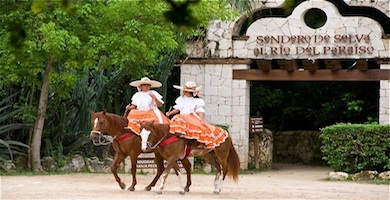The Spirit of Mexico: Tequila
wandermelon sits down with an expert to learn more about the world’s fastest growing spirit, including what to look for in a bottle and how to travel to Tequila’s storied region.
Many of us have stories involving tequila, and hopefully they have gotten better as we have grown older. My early experiences involved cheap brands, hazy memories of border towns and promises of “never again.” That changed dramatically once I began exploring Mexico and savoring some of the country’s best in the way it was meant to be enjoyed: sipped, not slammed.
Similarly, tequila evangelist and guide Clayton Szczech began with sketchy tequilas and immoderate amounts. But he has since become a recognized expert and highly sought-after guide, leading trips to the region that produces Mexico’s famous liquid legacy.
I recently asked Clayton to share his extensive knowledge with wandermelon readers, because not only is tequila a fantastic sip, it makes for an even better travel opportunity.
EH: Tequila has had an incredible surge in popularity over the last decade or so. What would you attribute this to?
CZ: Tequila has gotten better. Primarily because the industry matured and decided to take itself seriously. The quality stuff that used to be reserved for the distilling families themselves started to make it to market and be exported. And people took notice.
Are there any downsides to this popularity, like a decline in quality, and if so, what should I look for in a good tequila?
Some of the well-known names have over-expanded and/or been bought, and their quality has suffered. At the same time, for 99% of the public, this is the best time in history to drink tequila, as newer and smaller brands have taken up the slack and are making great tequila. (editor’s note: one we love in particular is Ixa Organic Tequila)
As for as what to look for – stick to 100% agave tequila, attend formal tastings and “trust your mouth” as one of my maestros in Mexico says. Any 100% agave tequila that you like is a good tequila. Your tastes will evolve of course, and you might not like that same tequila in one year. Enjoy the journey- there are a lot of great tequilas out there.
There are various types of tequila, such as plata and reposado. Can you discuss the differences, such as aging times and flavor profiles?
Again, stick with the 100% agave category –it tastes better, you’ll feel better, and it’s better for the land and economy in Tequila Country. Silvers (blancos, platas) are generally un-aged. They can be incredibly subtle, and they showcase the agave, the earth and the distiller’s skill. A reposado has been on wood for over two months, usually less than a year. A well-balanced reposado is a wonderful thing, where the sweet/earthy agave notes are amplified by and resonate with a light touch of oak. Añejos and extra-añejos have been aged in oak barrels at least one and three years, respectively. The more you like whiskeys and other brown spirits, the more you’ll like these.
Tequila is traditionally from the Mexican state of Jalisco and some surrounding areas. Are there ways to travel to these regions to experience tequila and its culture and can it be done safely?
Jalisco is a safe place, and you’d have to go looking for trouble to find it. In Tequila itself, a small-town closeness survives, that is warmly extended to outsiders. People trust each other and kids play outside till after dark – things you don’t see in the US anymore. Having a good guide who knows the area and all the locals of course makes things that much smoother, enjoyable and more authentic.
What’s a favorite anecdote from one of your many travels to the region?
We always visit Tequila Fortaleza, a functioning 19th-century distillery making the world’s most traditional tequila. My friend met us at the gate to show us around. Proper introductions weren’t made because he brought us inside immediately, as the agave was being stone-crushed at that moment. During the tour, he shared stories about growing up there and showed us the family stable. After the tasting, one woman asked me how long he had worked there, since he knew everything so well. I sheepishly told them it was Guillermo Sauza, fifth-generation tequila maker and distillery owner we had just spent several hours with! It’s very representative of people down here – down to earth, proud but humble, and sincerely appreciative of the interest my guests take in tequila.”
Clayton Szczech is a tequila specialist and tour guide. His “Experience Tequila” excursions are endorsed by the Tequila Regulatory Council and the Lonely Planet guidebook. Click here to learn more about Experience Tequila tours and special perks for wandermelon readers!
Latest posts by Eric Hiss
- Water Warriors Hit The Beach In SOUTHERN CALIFORNIA - September 4, 2015
- BORA BORA'S Ultimate Beach Party - November 17, 2014
- Surf in Style in LAGUNA NIGUEL - June 26, 2014






